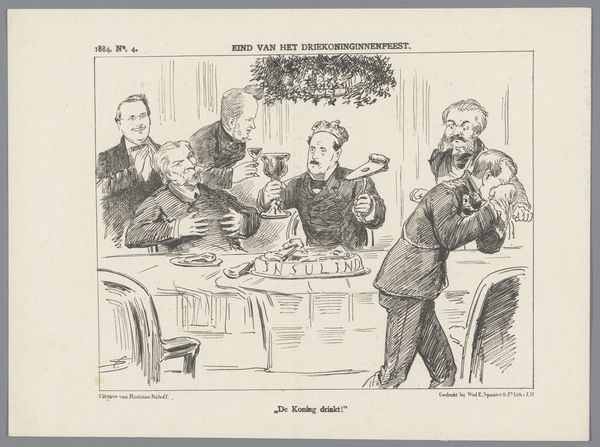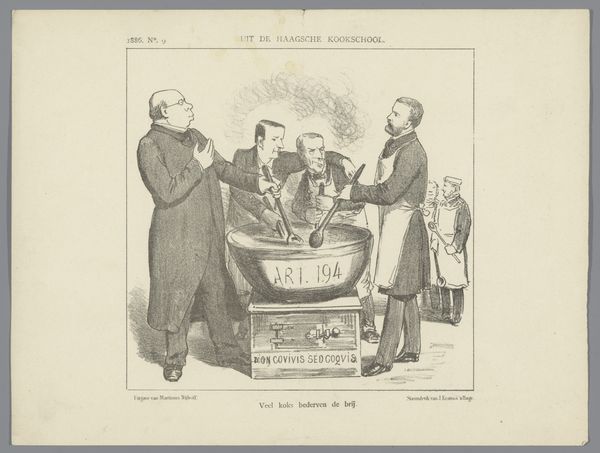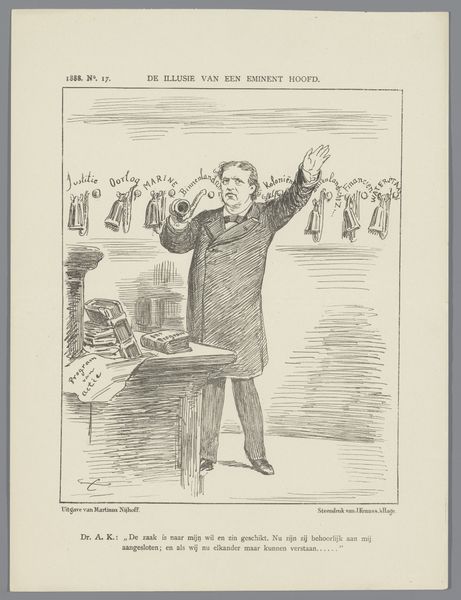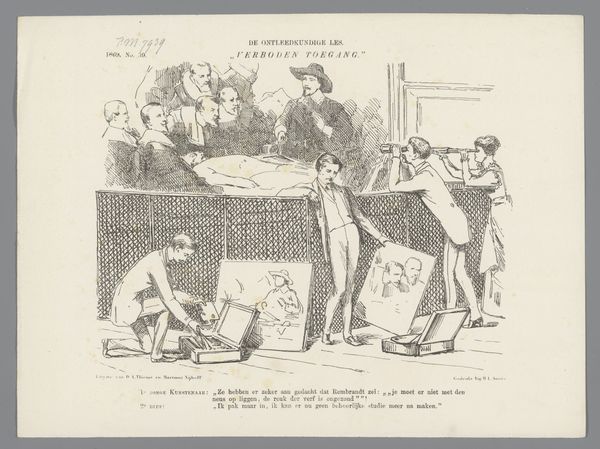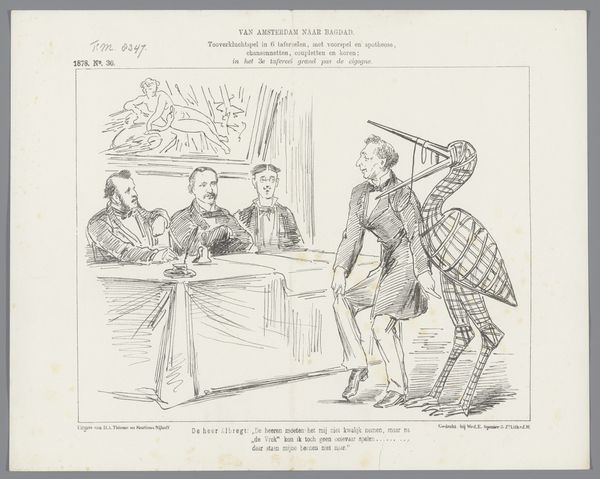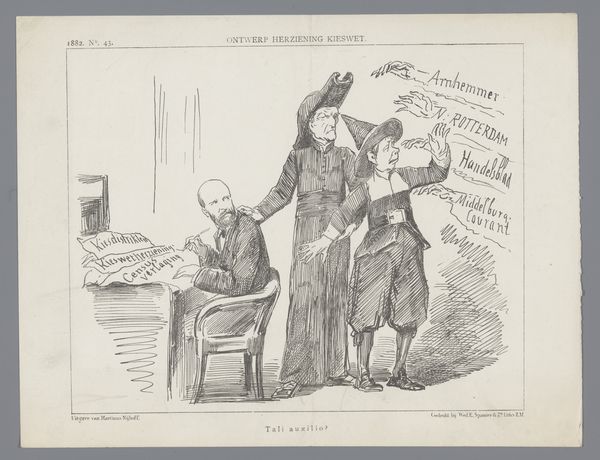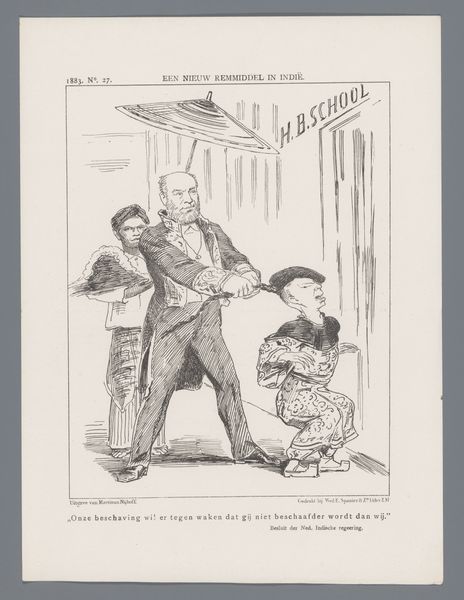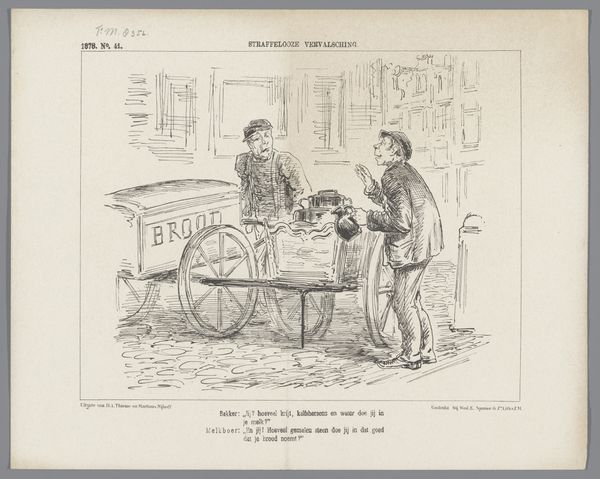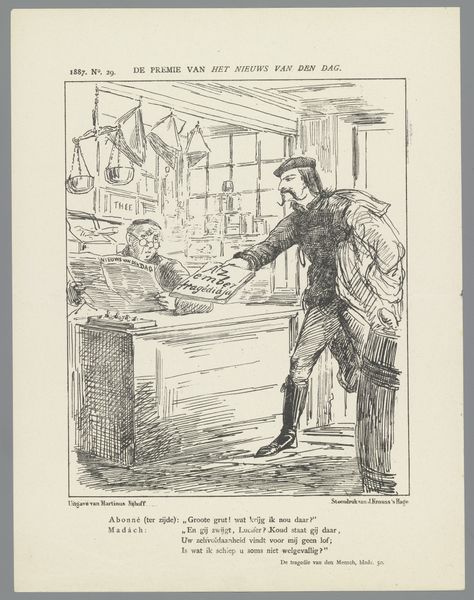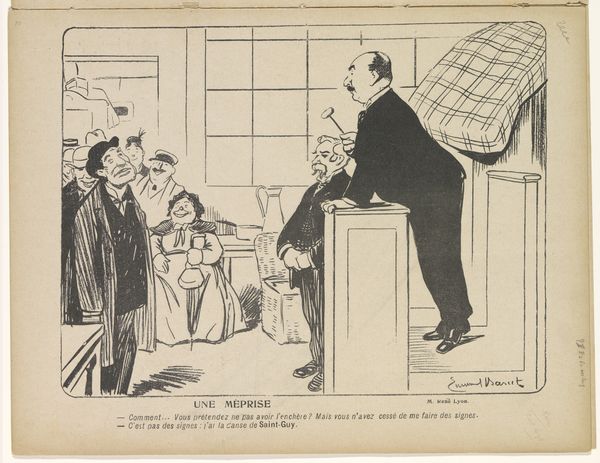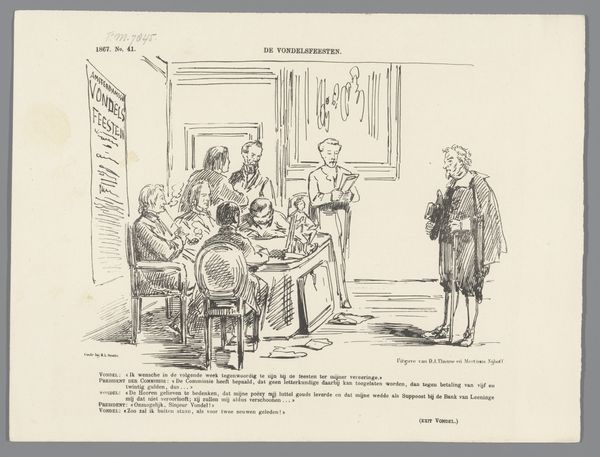
Dimensions: height 215 mm, width 275 mm
Copyright: Rijks Museum: Open Domain
Curator: This lithograph and etching, entitled 'Politieke spotprent over de belastingplannen' which translates to "Political cartoon about tax plans," was created in 1884 by Johan Michaël Schmidt Crans. It’s a wonderfully intricate piece of satire. What’s your first reaction? Editor: Babies! Swaddled in cloths literally labelled ‘taxes.’ My immediate thought is… well, somebody’s feeling financially burdened. It's got this strangely tender yet deeply cynical air. The faces of the men holding the 'tax babies' seem like they are at a baptism, but look very grim. Curator: Precisely! The artist uses this somewhat grotesque imagery to criticize the tax policies of the time. Look closer; the 'babies' are named “Income tax” or "Savings on school contributions” all weighing down the poor adults, each representing a sector burdened by these tax plans. It very cleverly shows taxation not as some abstract economic concept, but a living, breathing burden on everyday citizens. Editor: It definitely succeeds in that message. The level of detail in the hatching and linework adds to the heaviness of it all, don't you think? The almost feverish way it's rendered makes it seem like an anxiety dream turned into a political statement. You know the way the light and shadows look almost neo-impressionistic? It all adds to this oppressive air. Curator: Yes, there’s a density to the marks. Schmidt Crans would have been directly addressing specific policies and figures that are now somewhat lost to time, making the satire harder for contemporary eyes to grasp without historical knowledge, however this clever analogy can still make us feel the burden! But even without that direct context, the message of bureaucratic burdens remains poignant. The table on the left, for instance, is labelled 'Odcenten', or small cents, meaning even petty expenses are taken from people. Editor: Which still rings true today, of course. Thinking about it now, the most powerful element might be that central figure holding one of the babies closest, and looking forlornly forward at the viewer. Is this the taxpayer as a sacrificial lamb? He certainly is weighed down by the troubles of society in this context, isn’t he? Curator: Absolutely. It invites us to sympathize with the population affected by those laws, a common strategy for caricatures. The choice of babies further intensifies the sympathy in the composition, they didn’t choose this destiny! It's interesting to see how artists then, just like now, used accessible symbols to comment on complex issues. Editor: Absolutely. Looking at this, it is fascinating to think of the history of taxes. I also see echoes of struggles, that continue even now, centuries after the piece was produced. Art endures not always for its own beauty, but sometimes also as a record of ongoing conversations of value.
Comments
No comments
Be the first to comment and join the conversation on the ultimate creative platform.
